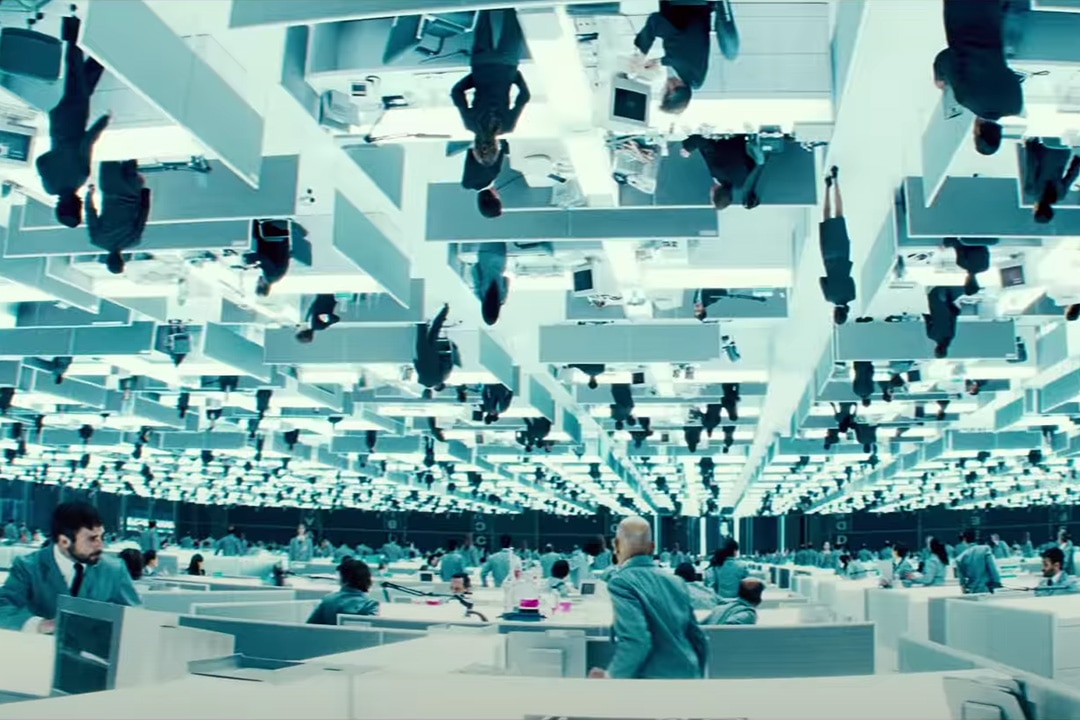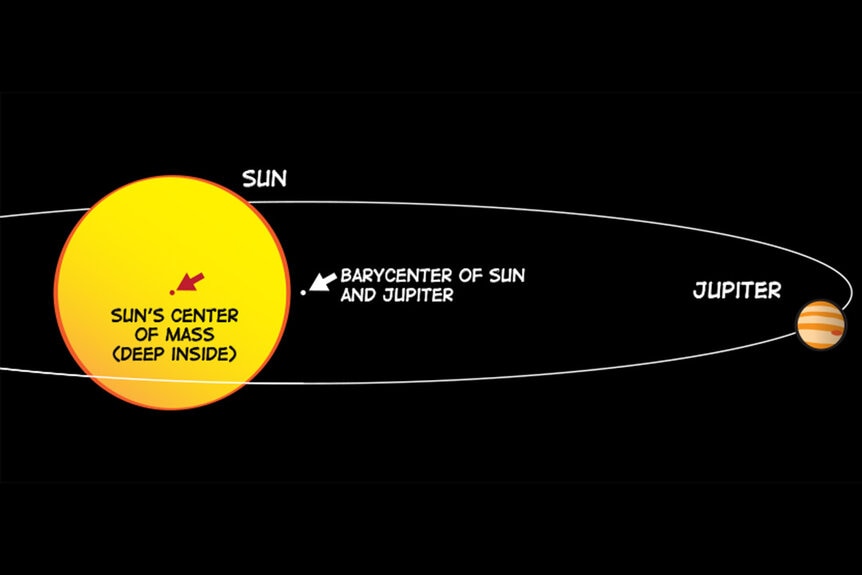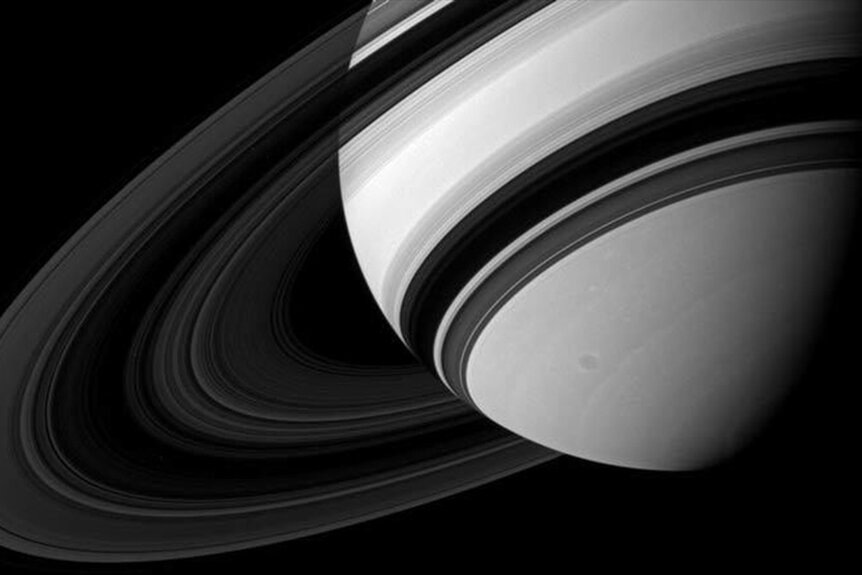Create a free profile to get unlimited access to exclusive videos, sweepstakes, and more!
The magical physics of binary worlds: The science behind 'Upside Down'
Not even physics can stand in the way of true love.

Juan Solanas' 2012 fantasy romance Upside Down (now streaming on Peacock!) is a genre re-imagining of Romeo & Juliet. In Shakespeare's tragic romance, the two titular leads are pulled apart by generational conflict and familial obligation. In Upside Down, our two leads — Jim Sturgess and Kirsten Dunst — are pulled apart by gravity itself.
The movie is set on two planets that orbit within rock-throwing distance of one another. It is possible, on these weird worlds, to stand on the surface of one planet and peer up at the tops of skyscrapers jutting downward from the surface of the other planet. Moreover, matter (including people) from one planet is attracted only to the gravitational field of that planet. This means that if Eden (Dunst) and Adam (Sturgess) want their relationship to work, they'll have to overcome both societal and physical forces beyond their control.
APPRECIATING THE GRAVITY OF THE SITUATION
In Upside Down, gravity isn't an innate property of all matter which acts equally on any other matter. Instead, it's something specific to the world on which a person or object was born or formed. If a person from Down Below attempts to visit Up Top, or vice versa, they will be pulled unerringly toward their home planet. The only way they can counteract this is to counterbalance their own mass is with mass from the world they're visiting. Anytime Adam or Eden want to visit one another, they have to spend their date with rocks in their pockets or weights around their ankles. It's a less-than-ideal solution and one which is illegal in the twisted politics of their shared worlds.
It's lucky for us that gravity doesn't work this way. If it did, space exploration would be an entirely different endeavor. Imagine sending a spacecraft out into the solar system without the benefit of gravitational assistance for navigation. Imagine keeping a spacecraft near a planet without being able to put it into orbit. Imagine having to anchor ourselves to the Moon or Mars because a sneeze could send you flying off into empty space.
Unlike Upside Down, gravity in our universe plays on the relationship between matter and spacetime. In the simplest terms, it is a force through which all bodies in space are attracted to all other bodies in space; a universal force that causes mutual attraction between all things with matter. That's the key characteristic, gravity isn't a relationship you develop with the world on which you were born or made, it's a necessary interaction between you and every other object you encounter. Planets included.
There are some other important reasons that the world presented in Upside Down couldn't exist (more on that in the next section) but if it could, gravity would be a whole lot weirder. Assuming the two planets have precisely equal mass and they are tidally locked, they should share a common center of mass at a point equidistant between the two worlds. If an explorer jumped into that intermediate space, you would experience decreasing gravity as the influence of your starting world decreases and the pull of your destination world grows stronger. There would be a point, halfway between both, where gravitational influence would even out and you'd be briefly weightless before the pull of your destination planet latched on and pulled you to the surface. That would be the ideal scenario, but it's not the only one.
Alternatively, if the two planets had different masses, they would both orbit a common center of gravity which might be inside the more massive of the two. Or it could be inside the intersecting orbits of both planets as they spin around one another. The gravitational relationship between worlds like that would be a lot more complex. You'd feel the increasing and decreasing effect of gravity depending on the positions of the worlds in the orbit. Imagine living on a world in which you literally become heavier during certain parts of the year.
THE ROCHE LIMIT
The dual gravity of Upside Down's binary world is not only a plot device that drives the societal and interpersonal character conflict, it's also the only reason those two planets can exist together at all. If the dual planets of Upside Down were real, they'd be in for a quick and destructive death and it's all thanks to the Roche Limit.
To understand the Roche Limit we need to think about how tides work. As the Earth spins and the Moon orbits, the gravitational pull of the Moon grabs hold of the surface of the Earth. We primarily notice that shifting gravitational influence through the tides. Water levels at some shores can change dramatically as the water is literally pulled toward the Moon's surface a quarter of million miles away.
If the Moon were much nearer, its gravitational influence would be stronger and the tides would be more intense. Likewise, the gravitational pull of the Earth on the Moon would also increase. Importantly, as demonstrated by the changing tides, the gravitational influence on one side of the planet can be significantly stronger than the other side and as objects get closer together, the disparity between the near and far sides becomes increasingly apparent.
Eventually, the smaller of the two worlds will reach its Roche Limit around the larger world. That's the point at which the gravitational influence of the larger planet overwhelms the internal gravity of the smaller one. And because the gravitational force is stronger on the side nearest to the primary planet, it gets pulled apart in chunks. Generally speaking, the chunks of the smaller world enter into orbit around the primary world, forming rings. It's believed that at least some of Saturn's rings may have formed in precisely this way when a moon got too close to the planet and was ripped apart.
There is a point at which the two worlds of Upside Down could orbit around one another stably, but it wouldn't be near enough that you could share office buildings. One or both of the planets would have been ripped apart long before they ever got that close and the only evidence they had ever existed at all would be in the smeared-out ring they left behind.
Looking for more stories of people defying the laws of physics for love and for family? Check out The Fast and the Furious franchise, now streaming on Peacock!




























